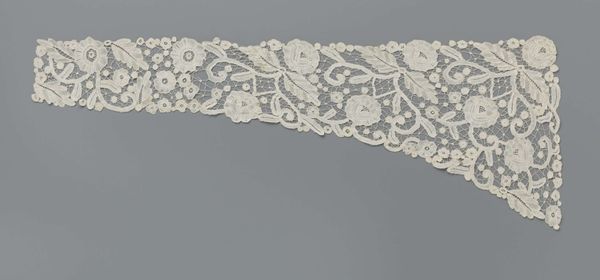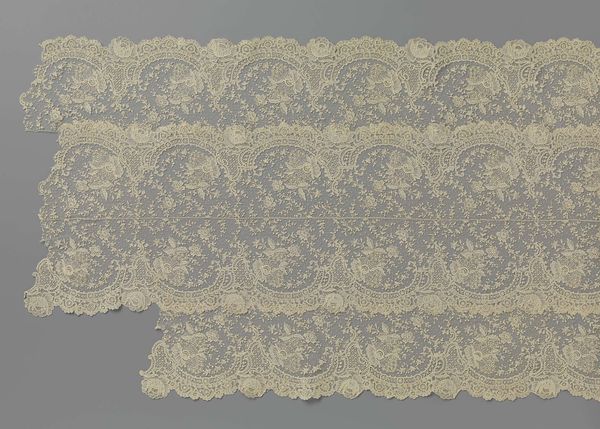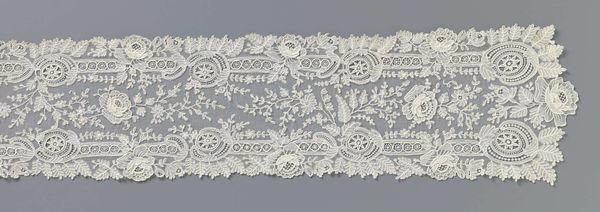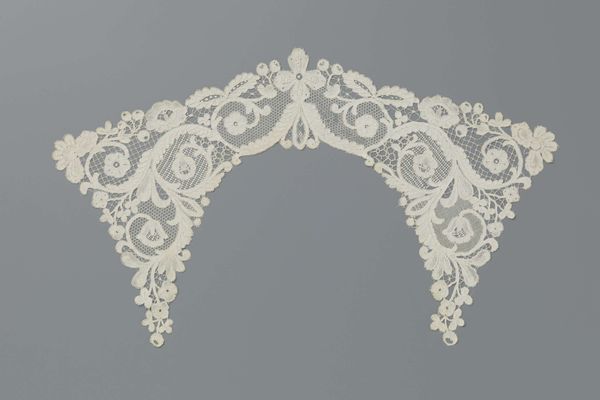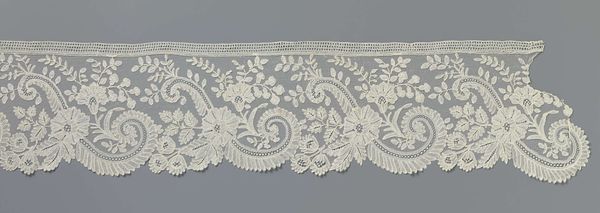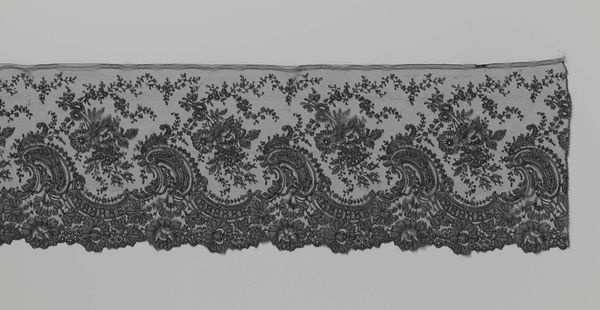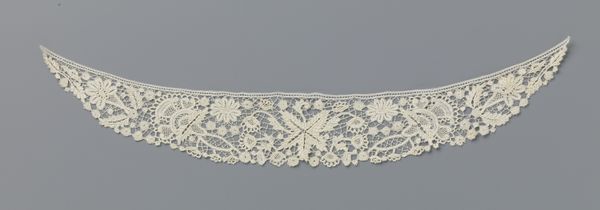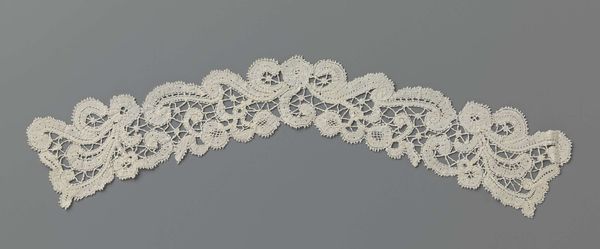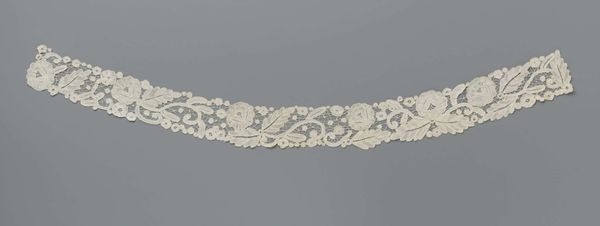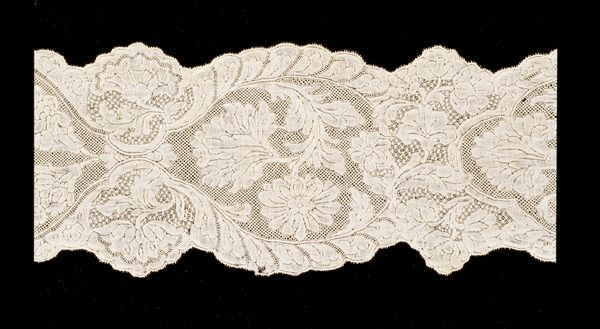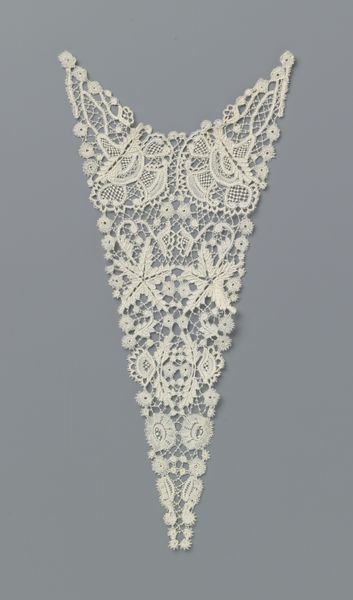
fibre-art, textile
#
fibre-art
#
textile
#
pattern design
#
fabric design
#
repetition of pattern
#
intricate pattern
#
regular pattern
#
pattern repetition
#
textile design
#
layered pattern
#
combined pattern
#
pattern work
Dimensions: length 141 cm, width 14.5 cm
Copyright: Rijks Museum: Open Domain
Editor: This delicate fiber art piece, "Japonstrook van gemengde kant met gelobde medaillons," is estimated to be from around 1875 to 1899. The artist is unknown, but I'm drawn to its intricate and repetitive pattern. What aspects of the lace strike you? Curator: For me, the material speaks volumes. Consider the labor involved in creating this piece: the tedious, painstaking work of a lacemaker. How does the process itself – the physical act of creating this – influence our understanding and appreciation of the textile? The choice to use a specific material, fiber, dictates both form and function here. Editor: That's fascinating. I hadn't considered the labor aspect so deeply. So you are suggesting the process of lacemaking is essential for understanding this artwork? Curator: Absolutely. Look closer at the motifs themselves – the repeated patterns, the floral elements. Where did those patterns originate, and who had access to them? Also, it might have connections with Japonisme, can you see some of the motifs influenced by Japan? It would be great to trace the movement of the cotton itself, thinking of the systems of global trade from which this seemingly delicate object emerges. Editor: The global trade context hadn't occurred to me, either. Thinking about it now, it’s really amazing that something so delicate involves complex labor. So by examining the materials and the means of production, we can gain a deeper understanding of the object itself, and broader social forces at play. Curator: Exactly. It pushes us to consider this less as “decorative art,” and more a product of complex global systems and intense human labor. This perspective helps us reconsider traditional art historical narratives. Editor: I see! It's definitely changed how I view not only this lace, but maybe even fiber art in general. Thank you. Curator: Likewise! I find your youthful insight encouraging.
Comments
No comments
Be the first to comment and join the conversation on the ultimate creative platform.
